Anything but Game Over, man.
Like the rotation of marines under your command, Aliens: Dark Descent benefits from both positive and negative characteristics that can affect the experience of its player. Its stunning use of the license creates an action-packed yet tension-filled experience that is dripping in the atmosphere of the films it is inspired by. While a host of technical issues currently plague the title, Dark Descent just might be the Aliens game we’ve all been waiting for.
Aliens: Dark Descent is certainly a title of its inspirations, crafting a real-time strategy game built on the idea of randomized expendable soldiers made popular through the likes of XCOM and Darkest Dungeon. As a cult plans to unleash the Xenomorph threat across Lethe, a mining moon under the watchful eye of the Weyland-Yutani corporation, you'll navigate a squad of soldiers through various settings inspired by the films. You'll equip these men and women with anything from smart guns to pulse rifles, manage their classes and upgrades, ensure they are healed from their wounds, as well as tending to their mental health, ensuring they are fit for duty before sending them back out to fight unspeakable horrors.
Dark Descent weaves its story around two central characters; Maeko Hayes, the Deputy Administrator aboard Pioneer Station, which governs the traffic in and out of Lethe, and Jonas Harper, a USCM Sergeant aboard the USS Otago who is a native of Lethe himself. After a series of events lands the pair on the surface of Lethe, utilizing a crash-landed Otago as a base of operations, Hayes and Harper must work together to repair the ship, deal with both the Xenomorphs and this deranged cult, and get to the bottom of a mystery surrounding a curious codename; Cassandra.
While the central plot that weaves throughout each of these entities is extremely satisfying, it’s the dynamic of Hayes and Harper that completely sells the overall package. Given the nature of expendable soldiers, it could have been easy to just rest on that idea and produce a bare-bones narrative with very little character, but Dark Descent is anything but that. While you’ll have a few moments to control Hayes herself and while Harper is generally just a voice in your ear during gameplay, the game goes to great lengths to develop these two, providing more than enough moments to truly test them and push them past their limits.
That said, it is those very soldiers that fuel the gameplay and provide some incredibly tense moments, navigating dark corridors and hostile environments as you gun down Xenomorphs and cult members alike. Dark Descent has you controlling four soldiers at once, with the ability to unlock a fifth slot as you progress throughout the game. Directing your squad is as easy as moving a cursor around, as each marine will react to threats independently, or by pressing Y to initiate a group focus on a particular target. While you can go in guns blazing, a system that dictates the aggression of your foes based on detection and audible engagement will have you thinking twice, prompting you to remain silent, rely on stealth, and keep to the shadows, even if the controls and structure of most environments don’t always make stealth an easy thing to do, or as satisfying.
This detection and aggression system dictates how the difficulty evolves and those looking for a steep challenge will revel in increasing the threat to keep the blood flowing. As you are spotted by Xenomorphs, it will start a timer, and engaging and alerting more Xenomorphs to your presence will soon see stronger and more diverse creatures tracking you down, with the possibility of waves of enemies flooding into the room during what is called an Onslaught. However, while you can often lay down a series of turrets to dispose of most of these encounters, the battles do take their toll on your team and can lead to low morale, panicked squadmates, extreme stress, and deep psychological trauma that can place them in therapy for several days. This takes them out of the action as you are forced to spend crucial days waiting for them to heal or rely on untested new recruits, many of whom you’ll rescue during missions.
As you train, heal, or spend your time aboard the Otago getting your crew ready for the next mission, you'll work through a narrative calendar that sees the days fly by with some days granting you the ability to reduce the stress of your team, but at the cost of denying you a mission the next day or that your medical team is off from work in return for some credits and resources. Each day you spend aboard the Otago will increase the threat on Lethe, with a later mission putting a finite timer on being able to escape the planet's surface alive. I ended up completing the game with about 4 days left, completing most missions at around 85-95%, which is the result of missing a few data pads and a few incomplete side activities.
Aboard the Otago, you'll have a few departments that aid you in taking care of your marines as well as outfitting them for the mission ahead. You can train benched marines in the barracks, tend to a series of upgrades as they level up, as well as check in on the armory and use the currency you track down on Lethe to acquire more, such as mines, rocket launchers, and heavy pulse rifles. Each department has a static character there to engage with, giving each area of the ship a unique personality to converse with.
However, the most essential of the departments is your medical wing. This is where you'll have to rely on your medical personnel to take care of your wounded marines, both physically and psychologically. As you rescue more survivors, some of them may be medically trained and boost the number of doctors you have at the ready or additional recruits to add to the grinder. Some wounds can take upwards to a week to heal, but piling on additional doctors to a patient can speed up their recovery but deny others any sort of treatment. And, as you upgrade your marines, you can cater those upgrades toward a faster recovery, which I found to be a crucial upgrade above all else.
Each marine can also suffer from various trauma, gained by developing too much unwatched stress. While a character in the last few levels will constantly be warning you about stress, to an absolutely annoying degree, it's the most important mechanic to watch out for. Stress is caused by taking part in engagements, seeing the motion tracker go off, and almost being spotted. As your marines will need time off to deal with these traumatic issues, it's another mechanic that causes some marines to be out for a few days to either wait them out or take on some missions with a fresh team.
As long as you have the ability to weld doors, which is used with a limited-carry item, you can retrofit a room to rest in, lowering your stress and tending to some additional issues with your squad. This is also the only way to naturally save the game, as the auto-save checkpoints almost feel random and unfair at times, often placing you back anywhere from five minutes ago to nearly twenty. It is wild that some completed encounters or mission objectives don't present a much-needed autosave. In fact, a whole mission won't allow a rest or auto-save whatsoever, requiring you to do it all in one go.
Each marine will come with some sort of negative trait, from kleptomania resulting in the marine holding onto some money at the end of a mission to stubborn marines taking away your ability to choose their upgrades and instead picking them at random for themselves. You'll need to balance your team with marines that won't hold you back as some traits end up affecting the whole team in some way. Thankfully, at a certain level, you can cure them of this trait, that is if you want to spend the upgrade to redeem themselves.
Marines can also be fully customized with faces, hair, armor, voices, and a nickname, as I did with my favorite marines, granting me the likes of Shadowseeker, Talon, Rook, Keys, and Ol' Clippy as my central team, the latter being an old joke from years ago I can’t seem to forget. It allows you to be a bit more connected to your squad as you'll want to reload a past save to save their life or know that you could do that encounter better. And, if they fall, they will be added to a memorial on the ship.
As marines level up, you'll be able to choose from two random classes, from gunner to medic, to tecker, recon, and sergeant, you'll be able to then layer those classes with additional perks, apart from the standard character upgrades of more health, faster movement, or additional armor. Class upgrades allow for enhancements to how those classes work, such as a wider clip for the gunner, to a silencer for the recon class, providing an easier way to take out foes without making a lot of noise. Ensuring you have one of each class out on a mission can make for a nice and balanced squad.
Each class can also benefit from additional weaponry, such as the heavy pulse rifle to the smart gun or a revolver, granting you more options in the field. Combat generally happens automatically once you've been spotted, and in the case of taking on the cult members, who are all packing themselves, you can take cover behind structures to increase your evasion and prevent being hit too often. And, should you suffer a substantial hit, med kits are available should you have enough of them.
Occasionally, you'll have to blow stuff up, this is by using an ammo pickup to set C4 charges to clear debris. This will cause some sort of enemy to track you down given the excessive noise the explosion makes. Granted, you can usually use a tecker to open up a door to bypass some of these blockages, but that isn't always the case. Each pickup, from the ammo mentioned above to med kits and engineer items, each has a limit, some that are enforced based on your squad’s upgrades. These items are easily found on the map, and you can even see where they are on the map when you have that room discovered.
Command points are a mechanic that allows you to use special abilities, such as blasting a Xenomorph with a shotgun, to tossing out a grenade. These command points are finite, with the number you’ll have at the ready based on your squad’s upgrades. This system prevents you from spamming the best methods to put down your foe and causes you to expend your whole toolkit at times, getting the most of your marines, their classes, and their upgrades. It's great to balance the challenge out and keep you focused on making your team even more efficient, even if your mobile turret, which can be retrieved and used later, can often solve most of your encounters when you set down several of them. Honestly, turrets will make your life that much easier, it’s not even a contest.
While you'll burn away hundreds of facehuggers across the roughly 25-hour campaign, there is a decent variety of enemy types you'll encounter. Runners, cult members, and synthetics are going to be the types you run into when the aggression timer isn't on fire. Otherwise, you'll be tasked with preparing for praetorians, warriors, and several more that will come rushing when you're on high alert. You'll also be tasked with several Queens to worry about as well as what awaits you deep in their lair, an encounter that I honestly disliked greatly.
While many of those enemies are laying in wait, the interiors you'll explore are often pitch black, requiring you to discover and move into a location to remove that fog of war. The way it fades as you enter into a room is impressive as it slowly uncovers the grotesque Xenomorph landscape that infects its surroundings. Exploring each location to its fullest allows you to uncover more of the story as datapads and survivors are often waiting for you to track them down.
Now, my personal time with Aliens: Dark Descent was met with several glitches; from control panels not being interactive, marines welding the door from the wrong side, to several of my marines just not wanting to move. While a quick reload would fix these issues, at least most of them, almost every mission was plagued by some sort of issue. One particular one was with cutscenes providing a constant flickering of color bleeding in from the edges, this was pretty common across most cutscenes, but thankfully not all of them.
However, I did have an issue that was present during my entire playthrough. Selecting your abilities can be done by either having the game pause entirely for you or through a slow-motion effect. No matter how many times I attempted to turn on pause in the menu, it would kick back out to just allowing the slow-motion setting. This isn't a grave issue, but since a core feature of the game just wasn't accessible for a single second of my entire playthrough is a very notable technical issue indeed.
While not a technical issue, I found it incredibly odd that the codex to read up on the people you meet, and the places you venture to, is only accessible on a mission and not back at the base, especially since accessing the codex in a mission doesn't seem to pause the game. The codex is pretty detailed and allows you to understand more of what the game is conveying through its lore, data pads, and characters.
Aliens: Dark Descent is an impressive use of the Aliens license, especially towards the 1986 film that has been the inspiration for many films and games ever since. The atmosphere of each environment as you move the flashlight to discover what lies in the dark just works on such a level to capture the tone and tension of what that film did so perfectly. It has its issues, sure, but the core systems here really come together to create an action-packed tactical squad-based survival horror game that is anything but game over, man.
Developer - Tindalos Interactive. Publisher - Focus Entertainment. Released - June 20th, 2023. Available On - Xbox One, Xbox Series X/S, PS4, PS5, Windows. Rated - (M) Blood and Gore, Strong Language, Violence. Platform Reviewed - Xbox Series X. Review Access - A review code was provided by the publisher for the purpose of this review.


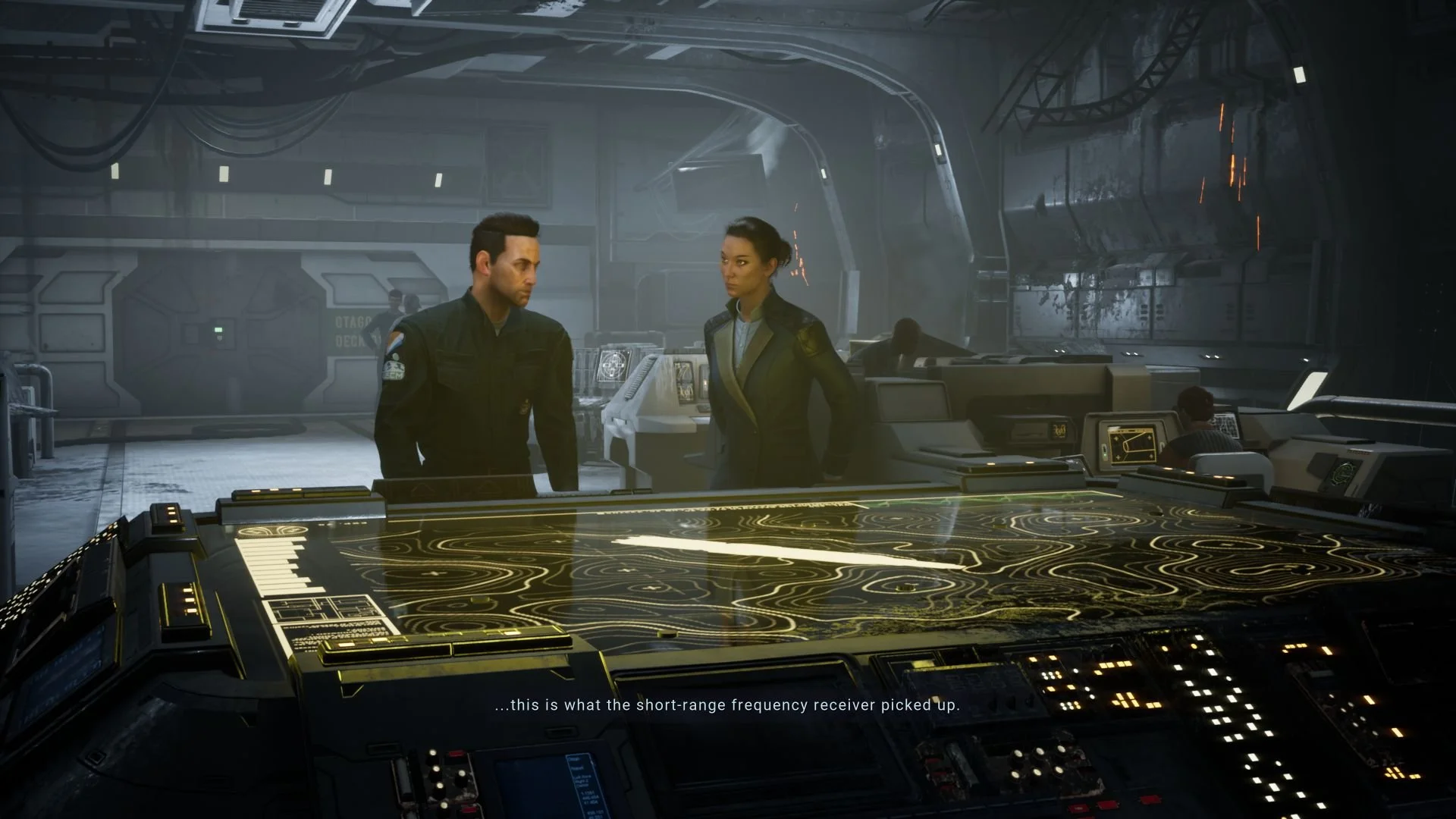
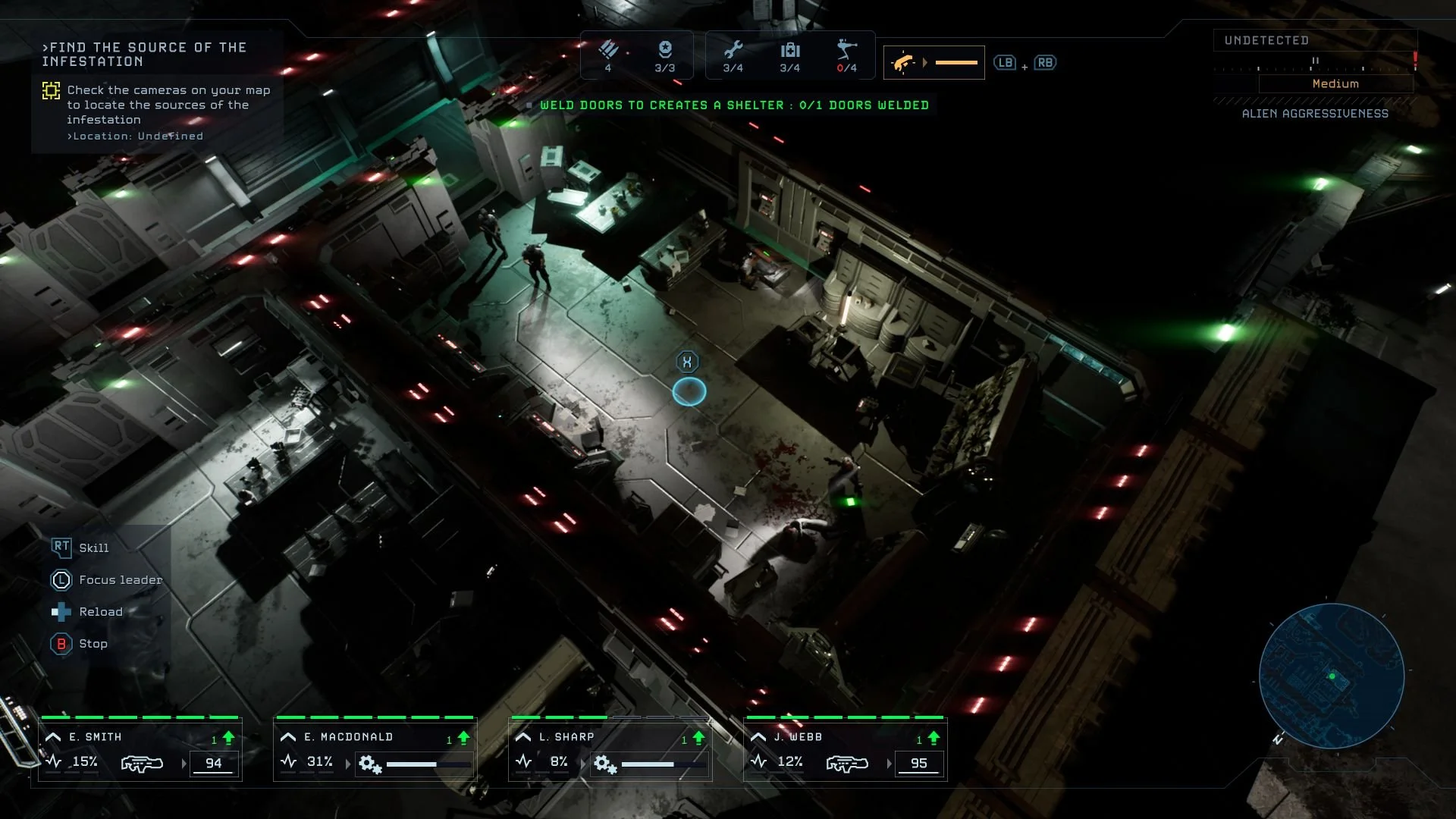


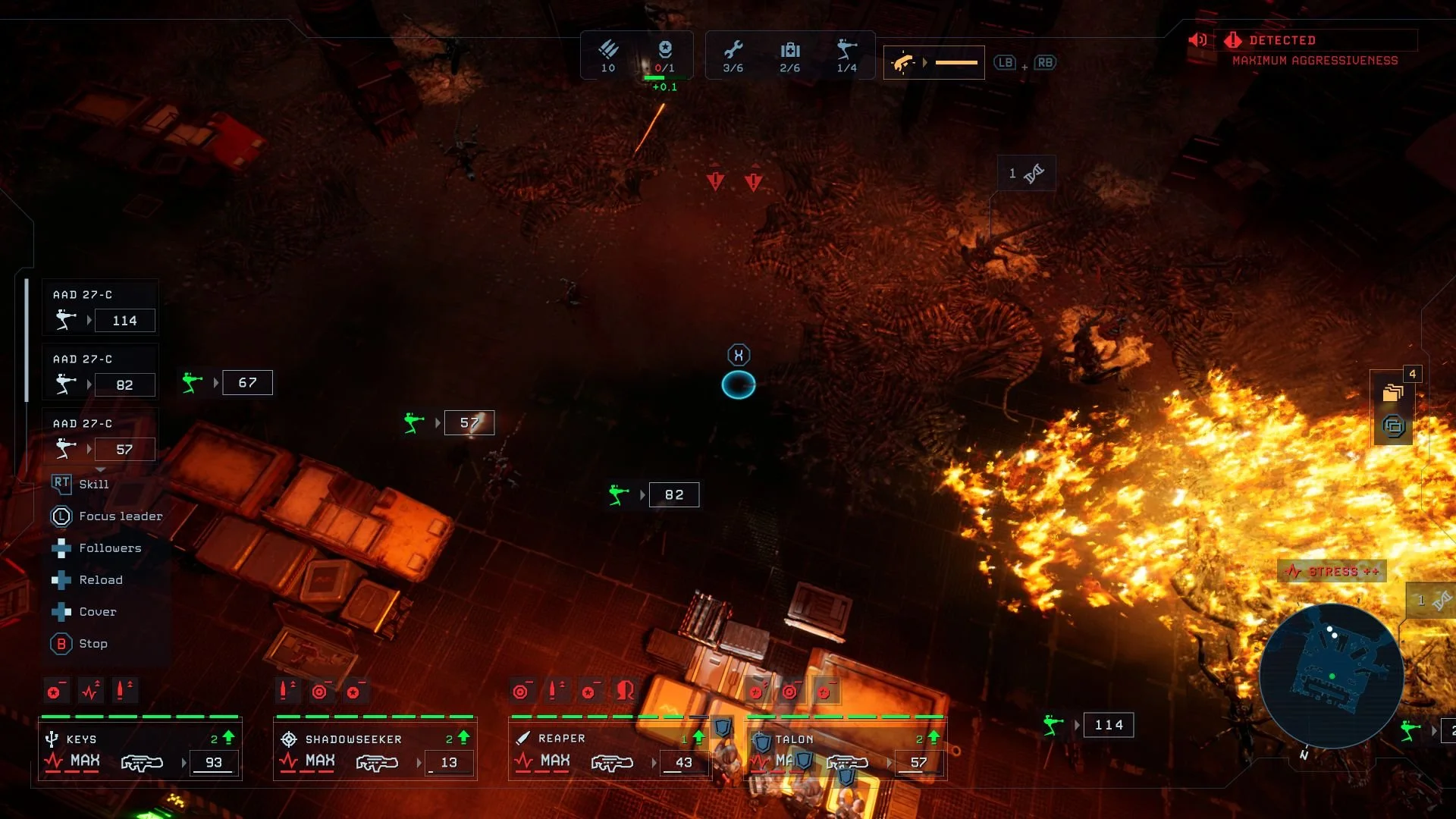
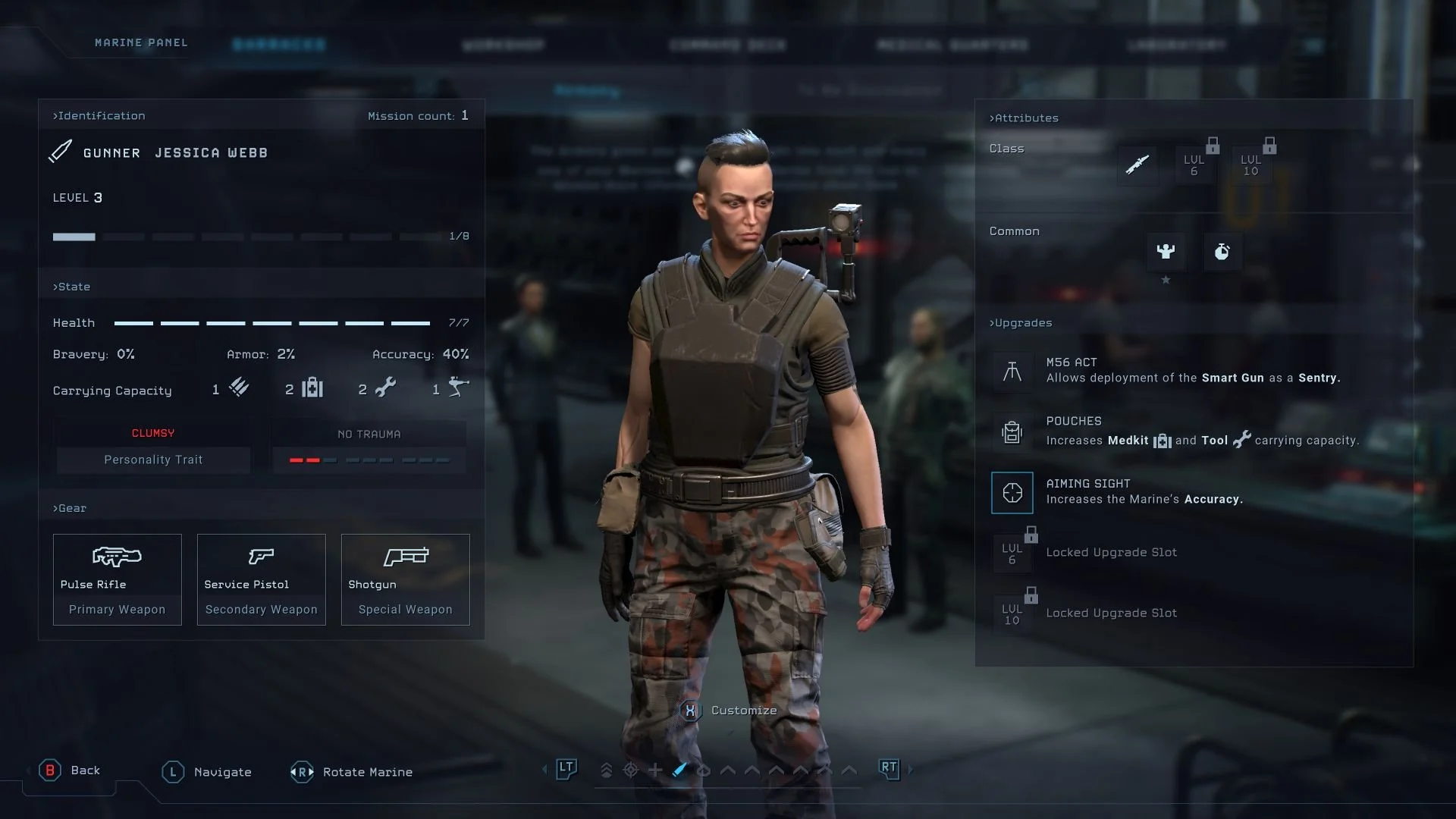
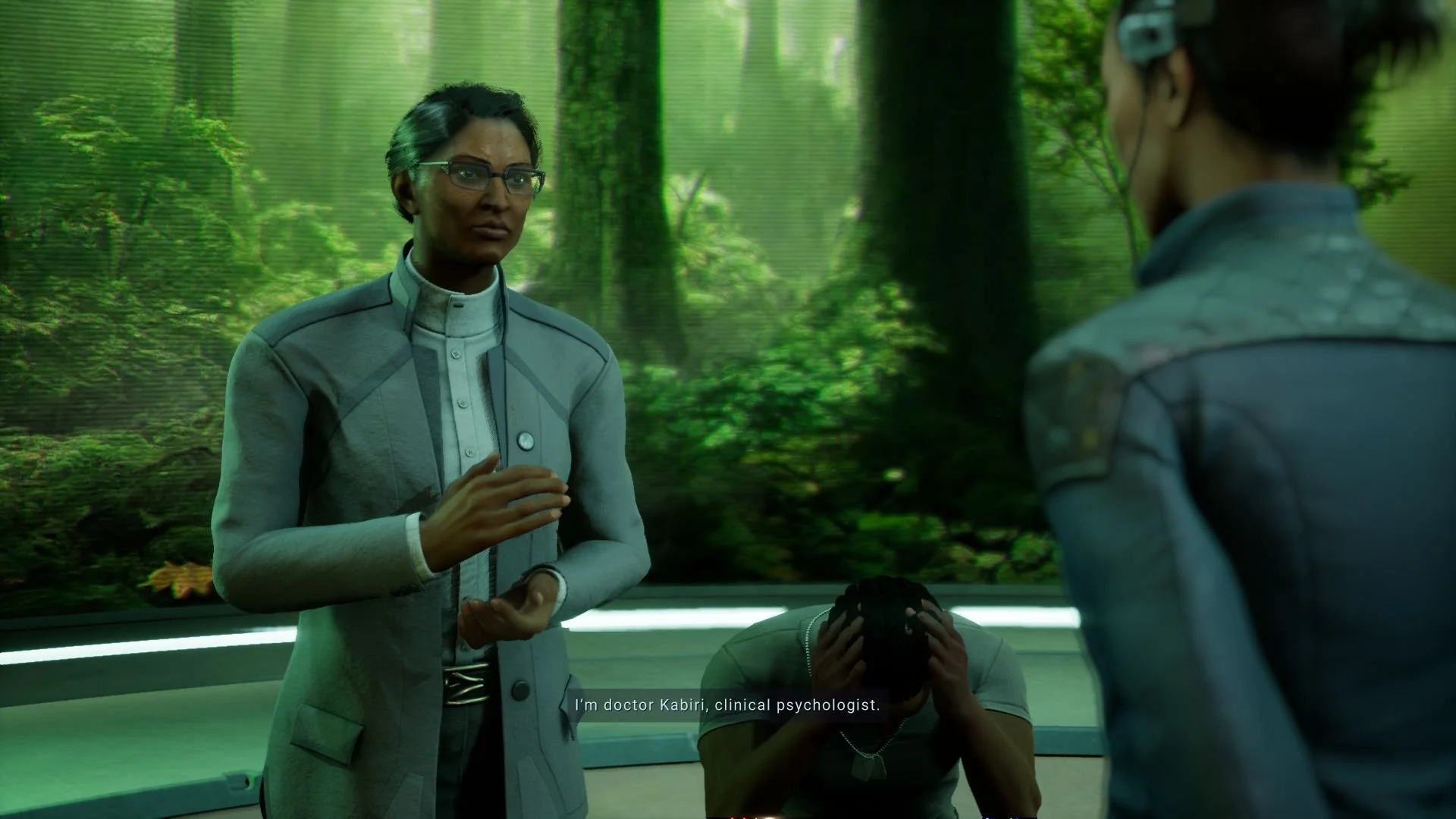

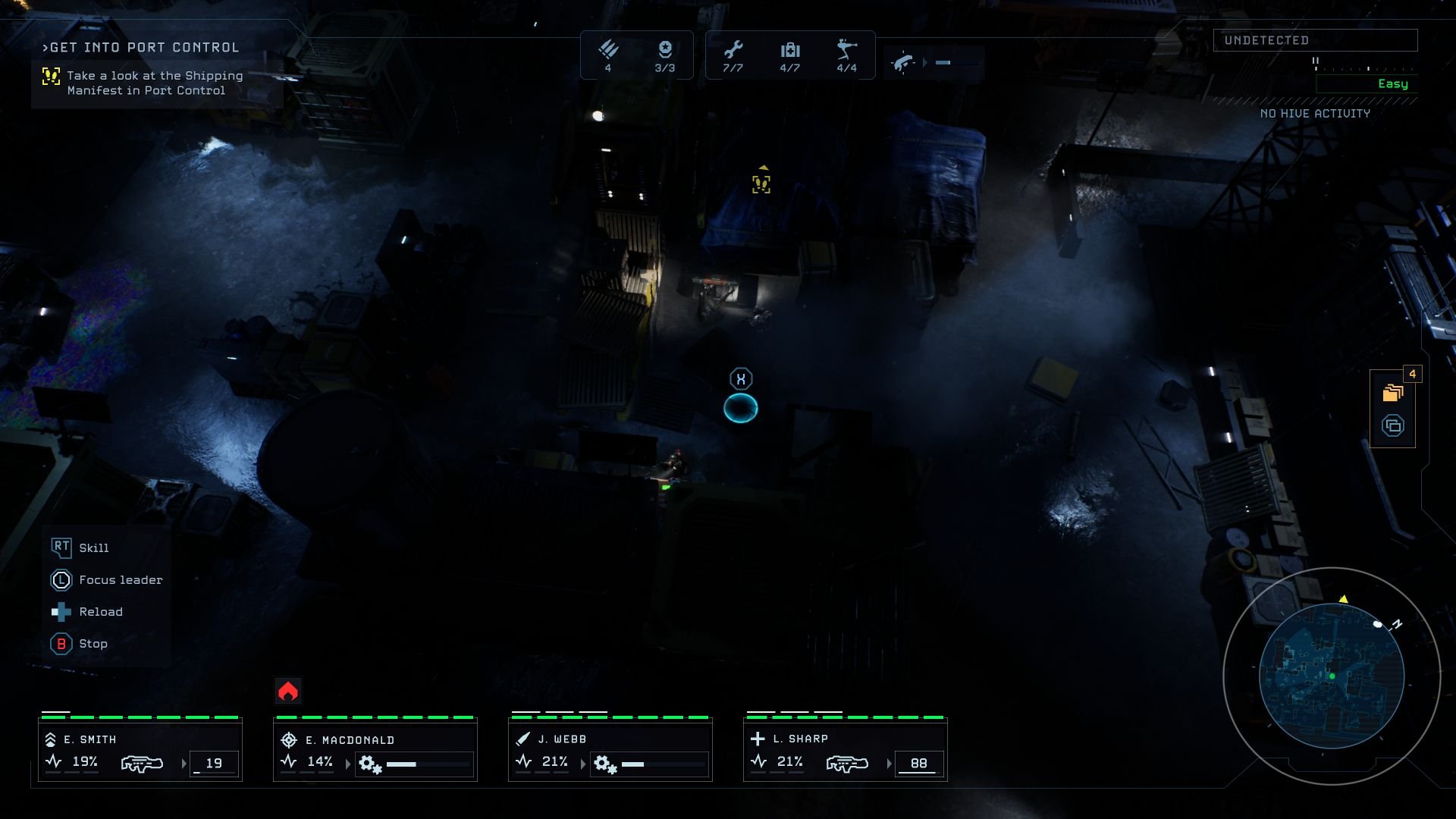
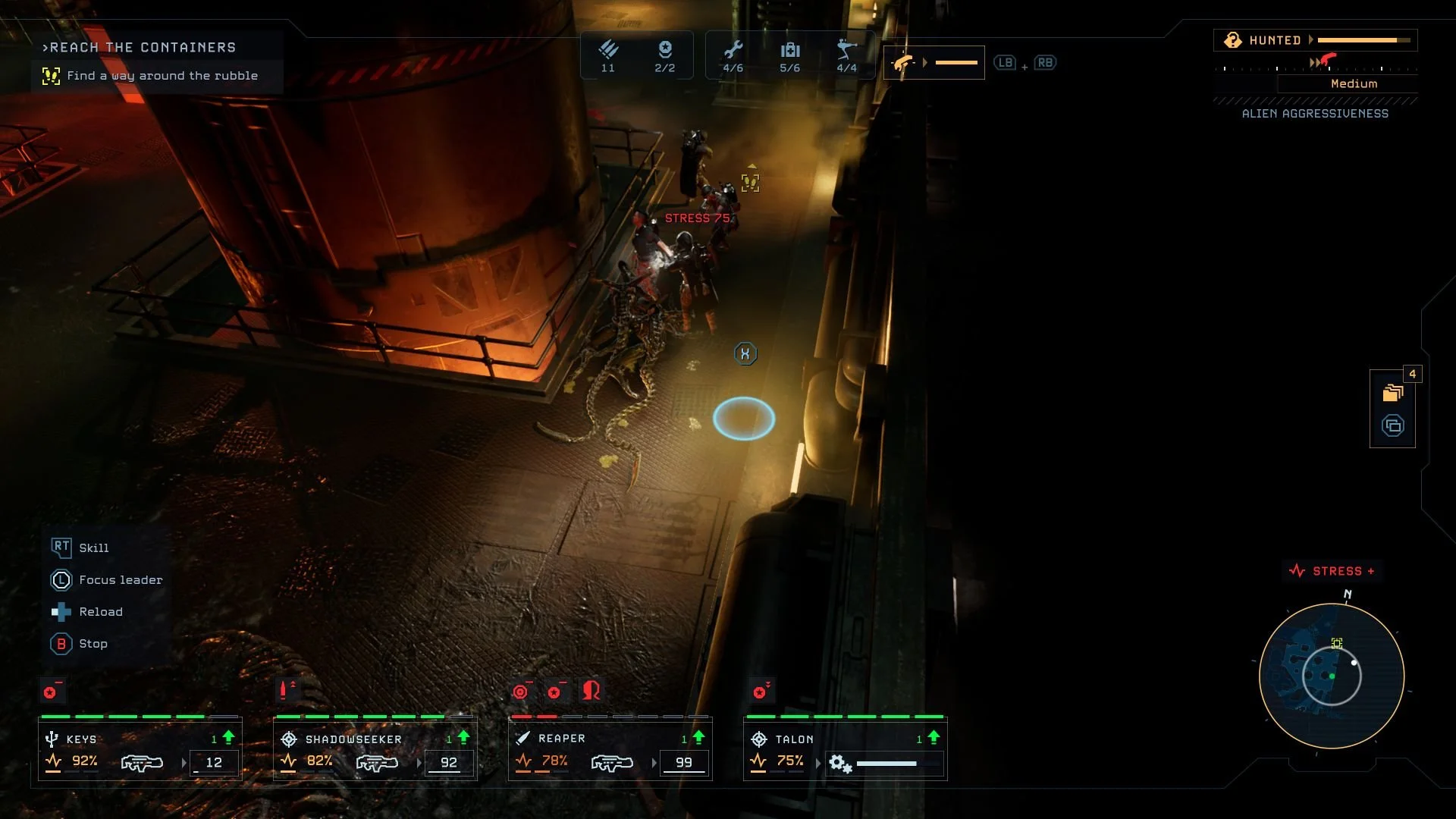
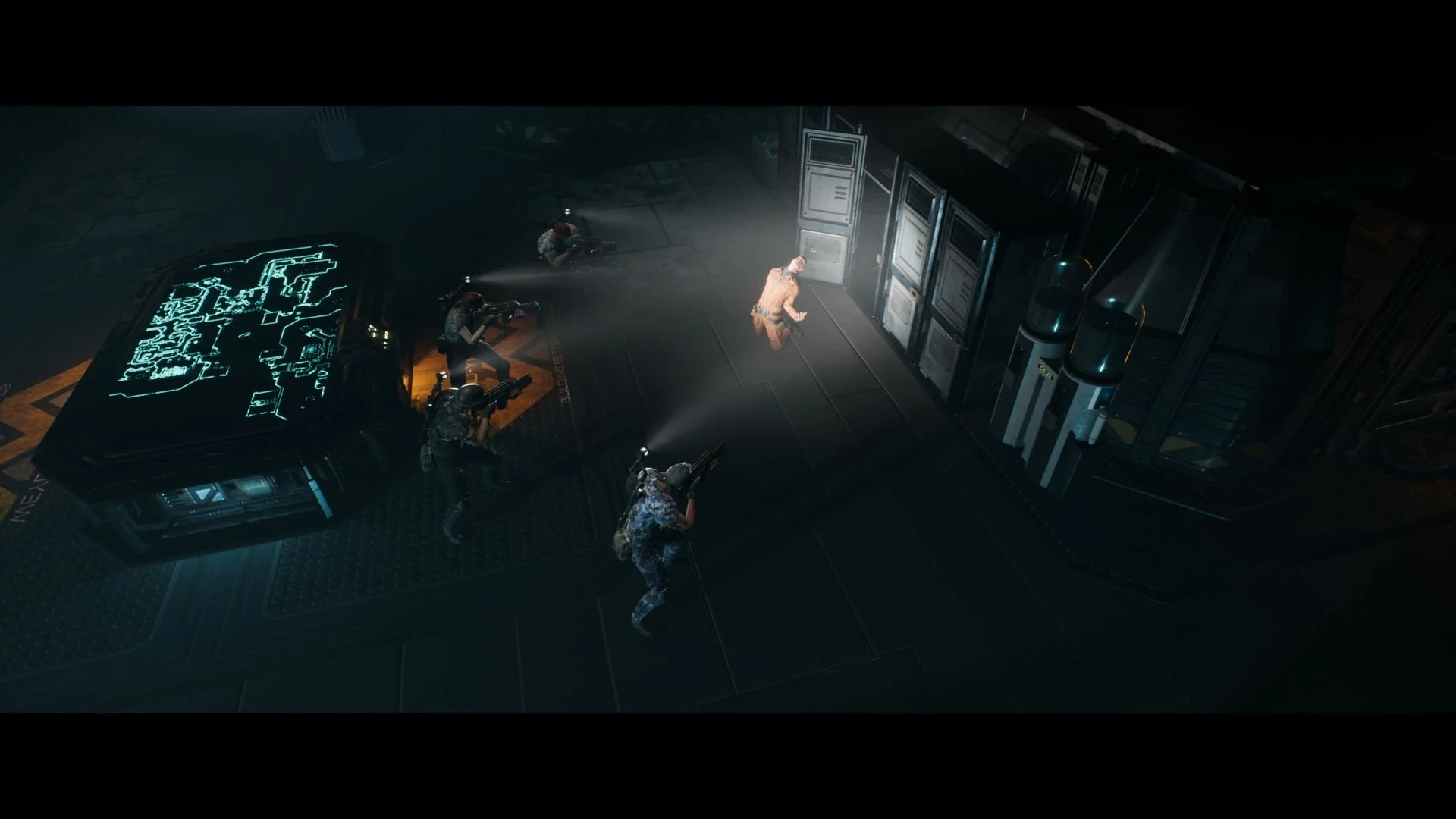





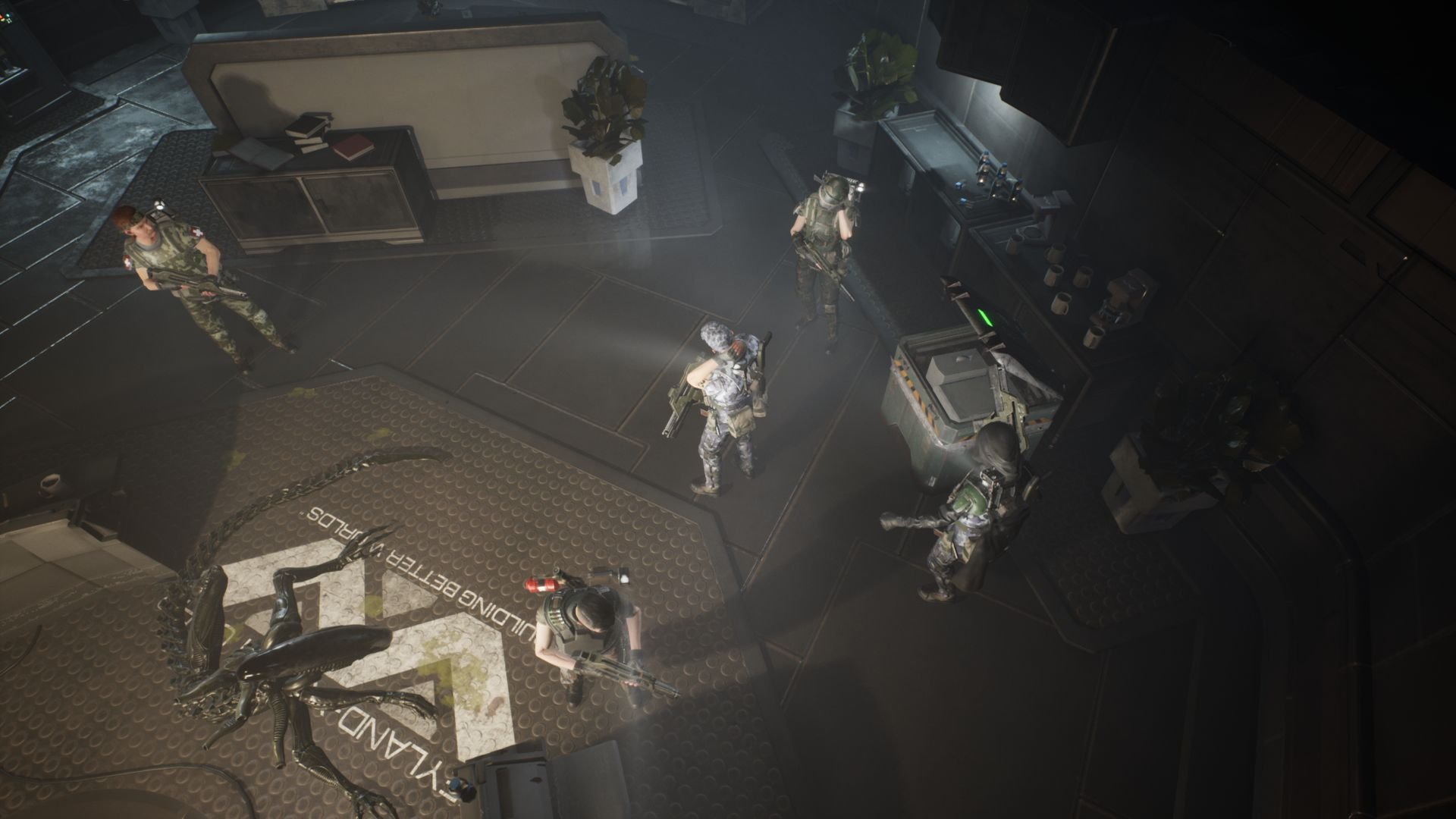

Jeff is the original founder of Analog Stick Gaming. His favorite games include The Witcher III, the Mass Effect Trilogy, Hi-Fi Rush, Stellar Blade, Hellbade: Senua’s Sacrifice, and the Legend of Heroes series, especially Trails of Cold Steel III & IV.